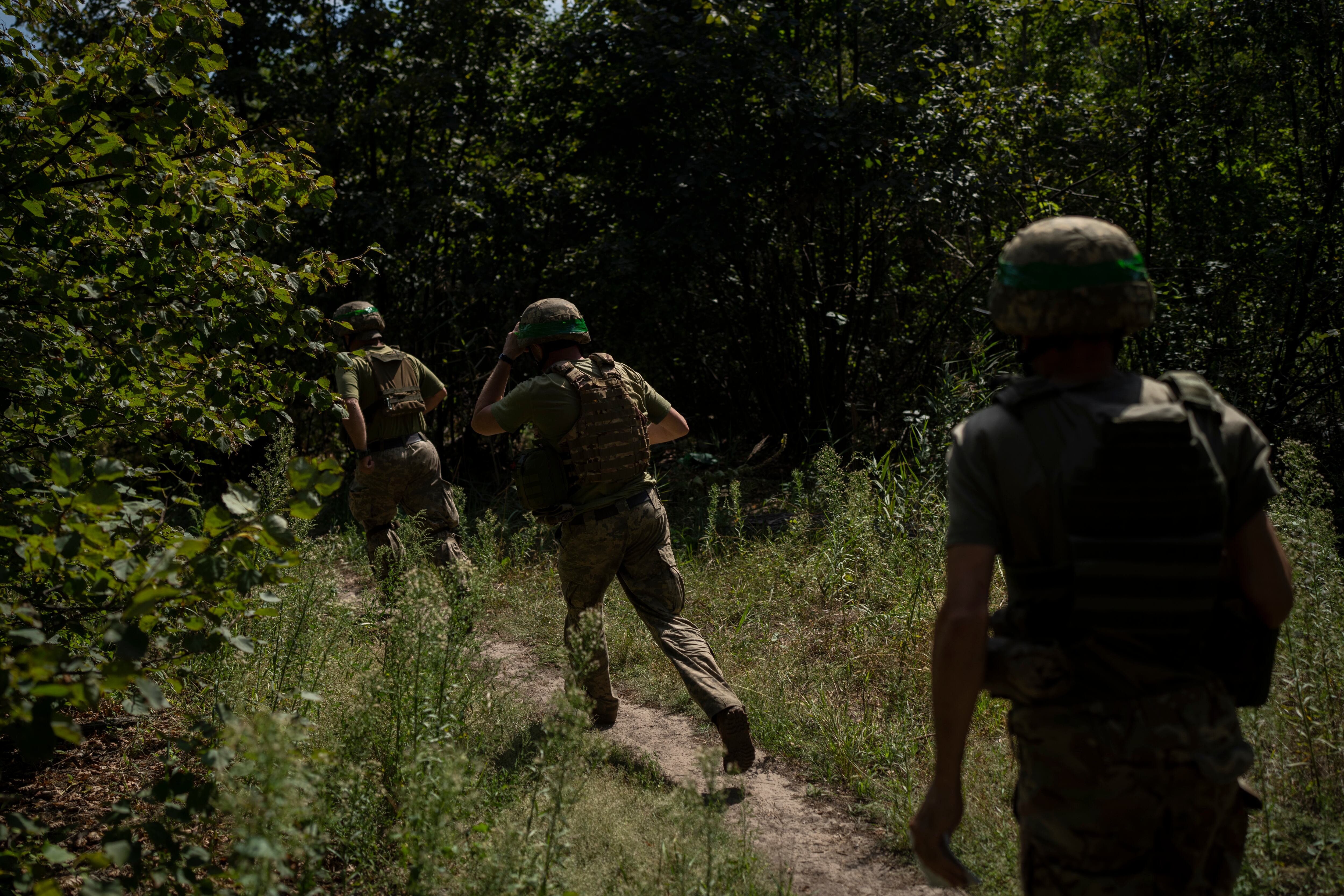The Ukraine war is being waged with a host of advanced technologies. Many believe this is transforming warfare, with omnipresent surveillance combining with newly lethal weapons to make legacy systems such as the tank obsolete and to make traditional methods such as large-scale offensive action impractical.
But in other ways this war seems very old. It features foot soldiers slogging through muddy trenches in scenes that look more like World War I than Star Wars. Its battlefields are littered with mine fields that resemble World War II. Artillery has fired millions of unguided shells, straining the production capacity of industrial bases in Russia and the West. Accounts of code-writers developing military software coexist with scenes of factory floors turning out mass conventional munitions lacking only Rosie the Riveter to pass for 1943.
So how different is this war, actually? How can such cutting-edge technology coexist with such echoes of the distant past?
The answer is that while the tools in Ukraine are sometimes new, the results they produce are mostly not. Armies adapt to new threats, and the countermeasures that both sides have adopted in Ukraine have dramatically reduced the net effects of new technology, resulting in a war that in many ways looks more like the past than like an imagined high-tech future.

As evidence, consider, for example, tank losses. Many revolutionists see heavy tank casualties in Ukraine as the key indicator for their looming obsolescence. And tank losses in Ukraine have certainly been heavy: in a year and a half, Russia and Ukraine have each lost more than half the tanks they entered the war with. Yet these are actually not unusually heavy loss rates.
In 1943, the loss rate for German tanks was 113% — the Germans lost more tanks than they owned at the beginning of the year. In 1944, Germany lost 122% of the tanks they entered the year with. The Soviet Union’s loss rates for tanks in 1943 and 1944 were nearly as high, at 109% and 80%, respectively. And in a single battle, Operation Goodwood in July 1944, Britain lost more than one-third of all the British armor on the continent in just three days of fighting. In the Battle of Amiens in 1918, in just four days Britain lost 98% of the tanks it opened the battle with. Few, however, argued that the tank was obsolete in 1943 or 1918.
Or consider artillery. Historically, more casualties are inflicted by artillery than any other weapon; some now believe that artillery causes as many as 80-90% of Ukrainian casualties. Among the war’s most prominent stories have been accounts of the two sides using drones to find targets then using networked communications to quickly relay the information for precision engagement by guided artillery. Not all artillery in Ukraine is precision-guided; most rounds fired by either side are traditional ballistically-aimed shells. But the teaming of these unguided rounds with new drone reconnaissance and rapid targeting is often described as a new and profound development in Ukraine.
If we assume that 85% of Russian casualties are caused by Ukrainian artillery, and if we use the Ukrainian Defense Ministry’s estimate of Russian casualties, then drones and the mix of guided and unguided artillery in the Ukrainian army have on average inflicted about eight Russian casualties per hundred rounds fired since February 2022. This is higher than in the World Wars, but not by much.
In World War II, artillery inflicted about three casualties per hundred rounds fired. In World War I, the figure was about two. Casualties per hundred rounds has thus grown since 1914 but at a steady, almost linear annual rate of around an additional 0.05 casualties per hundred rounds. Artillery in Ukraine looks more like an incremental extension of long-standing trends than a revolutionary departure from the past.
This is because armies adapt to new technology. As in past warfare, both sides in Ukraine have already cycled through multiple rounds of countermeasures and counter-countermeasures to drones and precision weapons. For example, the long-range guided HIMARS – high-mobility artillery rocket systems — that the United States provided Ukraine in June 2022 use GPS signals for guidance; the Russians now routinely jam the signals, dramatically reducing the accuracy of the missiles.
But the most important adaptations are often behavioral: increased dispersion, cover, and concealment. Taken together, these measures can dramatically reduce the theoretical lethality of new weapons in real warfare. And the net result in Ukraine has been closer to evolution than revolution.
Even evolutionary change is still change — the U.S. military will need to continue to adapt, as it always has. But the revolution argument calls for dramatic, discontinuous change rather than business-as-usual updating of doctrine and equipment. The war in Ukraine as actually fought, however, offers a weaker case for such transformation than many assume.
Stephen Biddle is a CFR Adjunct Senior Fellow, a professor at Columbia University, and author of Military Power: Explaining Victory and Defeat in Modern Battle (Princeton University Press, 2004). His most recent book is Nonstate Warfare: the Military Methods of Guerillas, Warlords, and Militias (Princeton University Press, 2021). Read the full piece in Foreign Affairs, “Back in the Trenches: Why New Technology Hasn’t Revolutionized Warfare in Ukraine.”
Have an opinion?
This article is an Op-Ed and as such, the opinions expressed are those of the author. If you would like to respond, or have an editorial of your own you would like to submit, please email us. Want more perspectives like this sent straight to you? Subscribe to get our Commentary & Opinion newsletter once a week.




